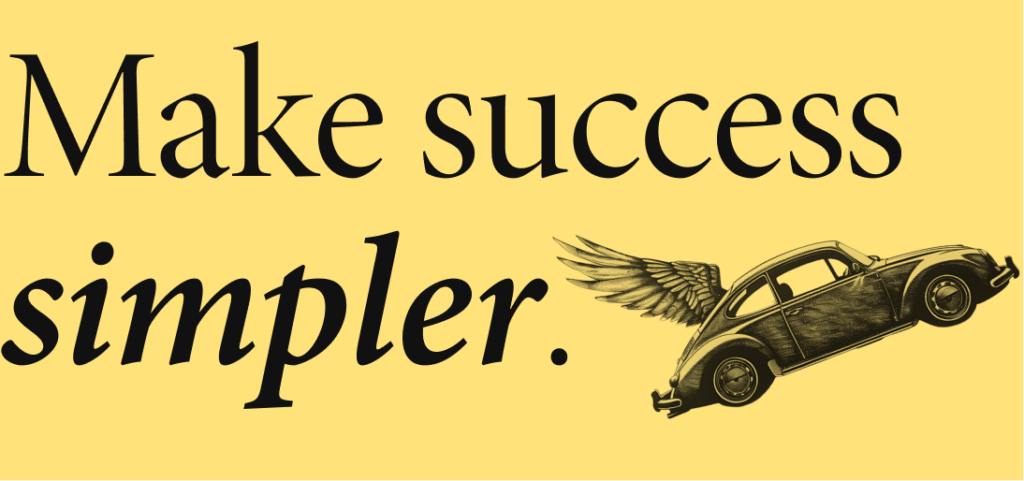It’s not about where you’re going. It’s about what you’re doing.
Welcome to One Thing Better. Each week, the editor in chief of Entrepreneur magazine (that’s me) shares one way to be more successful and satisfied — and build a career or company you love.
Today’s one thing: Moving fast.
That one thing, better: Growing strong.

Do you ever feel left behind, as others zoom ahead?
A reader recently emailed me about this. They wrote:
I work hard, but I see friends and colleagues advance faster than me. It’s frustrating and demoralizing, but I’m not sure what to do about it.
I have an answer to this — but it may sound counterintuitive:
If you want to get ahead, there’s nothing wrong with staying in place… so long as you’re growing in place too.
Today, I’ll show you what this looks like and how to do it. But first, a surprisingly relevant detour…
Let’s go back to 1988.
Did you ever play Super Mario 2 on the original Nintendo? If so, you’ll remember that were two ways to jump.
⬆️ If you pressed the jump button once, Mario would jump normally — the same as in other Mario games.
But…
⬇️ ⬆️ ⬆️ If you crouched down and waited a few seconds, Mario would start flashing — and then jump super high. It was called the power squat, and it looked like this:

Maybe it’s because I played a lot of Mario 2 as a kid, but this has become a kind of visual metaphor for me. By staying in place, and concentrating our energy, we can go further than any normal momentum would take us.
Guess what? We all have this superpower.
What a real-life power squat looks like
Here’s my own personal experience with this.
Early in my career, I spent years at a regional newspaper — first as a regular freelancer, then as a reporter in a dumpy office in a far-flung bureau.
Here’s a picture of that office. Those are my feet up on my desk:

While there, I became jealous of another reporter my age. He was doing splashy stories and working from the main office. Then he got a job at The Boston Globe, and it made me feel stuck and falling behind.
Question: Was I actually stuck and falling behind?
My answer: Maybe, but not necessarily.
Here’s the key thing to know: There are many ways to stay in place.
We often fetishize newness — a new job, a new adventure, a new product launch, a new partnership. But newness isn’t the same as advancement, just as oldness isn’t the same as stagnation.
You could be somewhere for eight years, doing the same thing on repeat and learning nothing new. Or you could be somewhere for eight years, constantly learning new skills and developing a deep network of contacts.
Both scenarios look the same from the outside, and maybe even feel the same on the inside. But one leads to stagnation, and the other primes you for explosive growth.
So if you’re feeling left behind, here’s the first thing you need to do:
Ask yourself these three questions.
At every job I’ve ever worked, I ask myself three things:
- What did I come here to learn?
- Have I learned it?
- What do I need to learn next, and can I do that here?
These questions are transformative, because what they’re really asking is:
- “What did I come here to learn?” = My goal is to learn something new — and then identify new opportunities that are available to me because I learned that new thing.
- “Have I learned it?” = I must be aware of when I’m growing and when I’m not. I never want to simply be on repeat.
- “What do I need to learn next, and can I do that here?” = I see some new opportunities ahead. Can I realistically grow here? If yes, let’s do it. If not, let’s move on.
These questions force you to assess your actions today based on your needs tomorrow.
No matter the path you take, remember:
New to this newsletter? Subscribe!
Some people step, but others leap
Some people make steady visible progress, like climbing the stairs one step at a time. Others make invisible progress — growing in place, until they’re ready to jump many steps at once.
One is not better than the other. And this isn’t just about jobs. If you own a business, it might grow in bursts — an incubation period of learning and development that leads to sudden explosive growth. It’s even true with other people, where the slowest-growing friendships or relationships can rocketship into incredible partnerships.
But whichever route you choose, you must be intentional about your time.
For example, here’s what happened to me at that dumpy newspaper office. My rival moved on to the Boston Globe, and I stayed put for a few years…
But while I was there, I started freelancing for other publications on the side, and pushing myself to develop new styles of writing. I became versatile and well-connected, even as I was technically “still” at the same job.
And then, one day, I leapt — first to a regional magazine, then to a national one in New York, skipping many of the “traditional” steps people usually take to get there. How? Because of everything I learned while I was technically standing in place.
Life isn’t a race, but it can be like a game of leapfrog.
Where you are doesn’t matter as much as what you do while you’re there.
That’s how to do one thing better.
